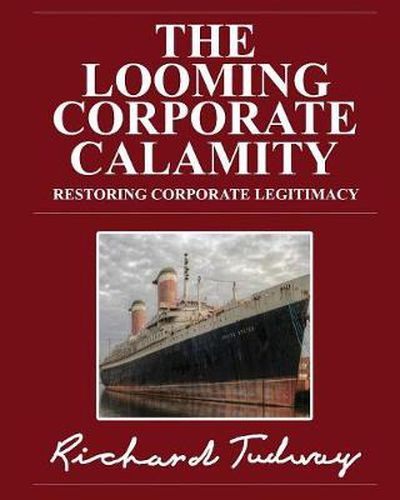Readings Newsletter
Become a Readings Member to make your shopping experience even easier.
Sign in or sign up for free!
You’re not far away from qualifying for FREE standard shipping within Australia
You’ve qualified for FREE standard shipping within Australia
The cart is loading…






This title is printed to order. This book may have been self-published. If so, we cannot guarantee the quality of the content. In the main most books will have gone through the editing process however some may not. We therefore suggest that you be aware of this before ordering this book. If in doubt check either the author or publisher’s details as we are unable to accept any returns unless they are faulty. Please contact us if you have any questions.
The Looming Corporate Calamity by Richard Tudway is a masterful analysis of the evolution of the limited liability corporation from its 19th Century origins to today’s crisis in the corporate governance of publicly traded corporations. He argues that structural failures in the modern corporation and abuses of corporate power have triggered a collapse in public confidence. These failures centre on the classic agent/principal problem and the unitary board system common to Anglo American jurisdictions. He outlines what has to be done to reform corporate governance and restore corporate legitimacy. It is a book that needs to be read by all students of business, business leaders, other professionals and citizens at large who seek to understand why public confidence in corporate behaviour has now reached rock bottom. The problems, as he explains, are connected with the evolution of corporate governance principally in Anglo American jurisdictions. In other jurisdictions governance arrangements have evolved differently. There are important lessons to be learnt from these differences. He identifies clearly the fundamental governance issues that have to be addressed and the reforms that have to be introduced. The book runs to 14 chapters with five supporting Annexes. Throughout it is supported with detailed references to key literature sources. Each Chapter has its own questions for review and tasks for readers to address in reaching a complete understanding of what is so fundamentally wrong with corporate governance as it stands.
$9.00 standard shipping within Australia
FREE standard shipping within Australia for orders over $100.00
Express & International shipping calculated at checkout
This title is printed to order. This book may have been self-published. If so, we cannot guarantee the quality of the content. In the main most books will have gone through the editing process however some may not. We therefore suggest that you be aware of this before ordering this book. If in doubt check either the author or publisher’s details as we are unable to accept any returns unless they are faulty. Please contact us if you have any questions.
The Looming Corporate Calamity by Richard Tudway is a masterful analysis of the evolution of the limited liability corporation from its 19th Century origins to today’s crisis in the corporate governance of publicly traded corporations. He argues that structural failures in the modern corporation and abuses of corporate power have triggered a collapse in public confidence. These failures centre on the classic agent/principal problem and the unitary board system common to Anglo American jurisdictions. He outlines what has to be done to reform corporate governance and restore corporate legitimacy. It is a book that needs to be read by all students of business, business leaders, other professionals and citizens at large who seek to understand why public confidence in corporate behaviour has now reached rock bottom. The problems, as he explains, are connected with the evolution of corporate governance principally in Anglo American jurisdictions. In other jurisdictions governance arrangements have evolved differently. There are important lessons to be learnt from these differences. He identifies clearly the fundamental governance issues that have to be addressed and the reforms that have to be introduced. The book runs to 14 chapters with five supporting Annexes. Throughout it is supported with detailed references to key literature sources. Each Chapter has its own questions for review and tasks for readers to address in reaching a complete understanding of what is so fundamentally wrong with corporate governance as it stands.